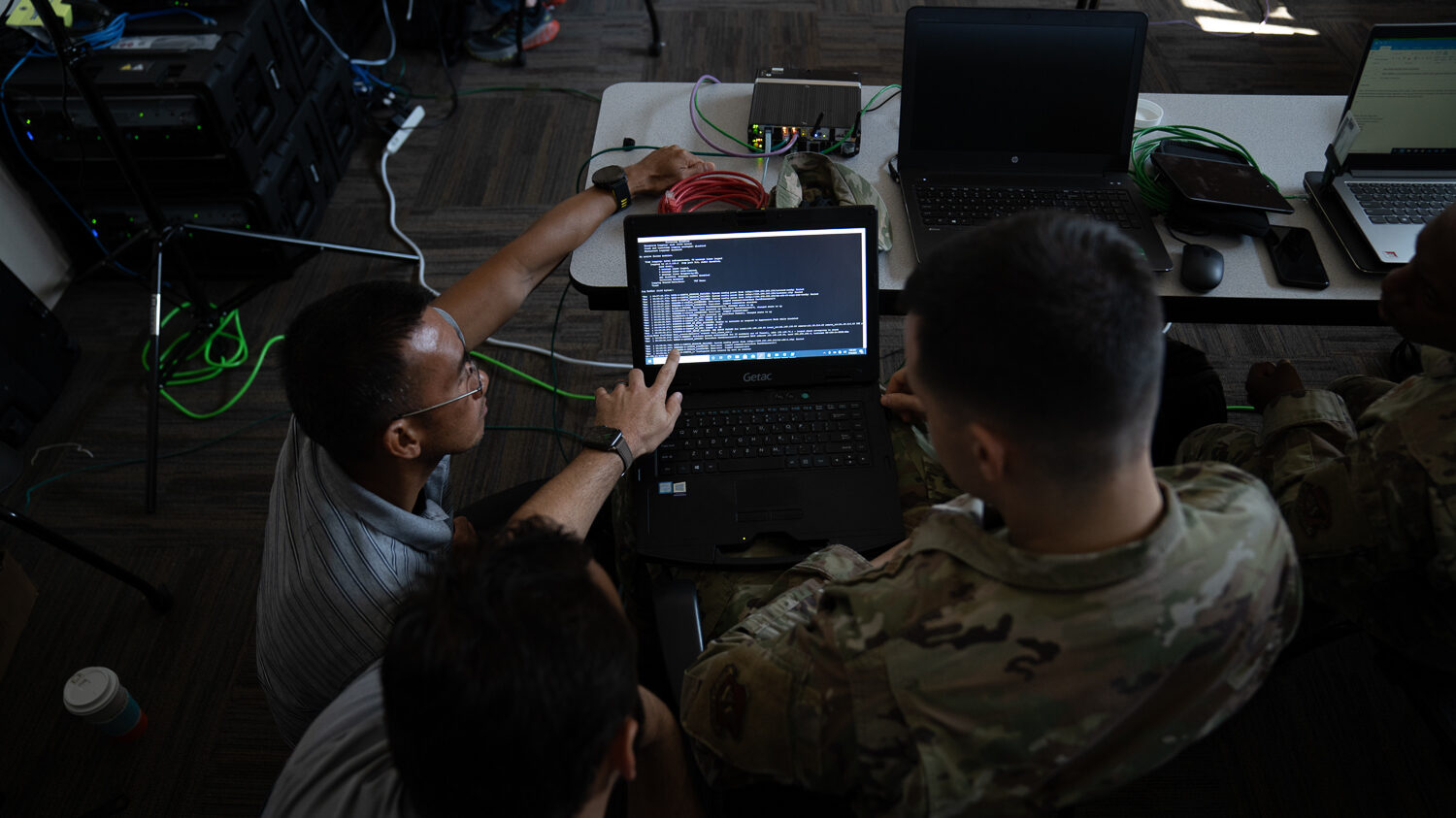In next Global Information Dominance Experiments, CDAO looking to speed allied info-sharing
July 19, 2023
Jaspreet Gill
Breaking Defense
In next Global Information Dominance Experiments, CDAO looking to speed allied info-sharing
July 19, 2023
Jaspreet Gill
Breaking Defense

Members of the 56th Air and Space Communications Squadronoperate cyber systems using a Enhanced communications flyaway kit during the Global Information Dominance Experiment 3 and Architect Demonstration Evaluation 5 at Alpena Combat Readiness Training Center, Alpena, Michigan, July, 12, 2021. (U.S. Air Force photo by Tech. Sgt. Amy Picard)
By Jaspreet Gill - Breaking Defense / July 19, 2023
WASHINGTON — In the next iteration of the recently relaunched Global Information Dominance Experiments (GIDE), the Pentagon’s Chief Digital and Artificial Intelligence Office (CDAO) wants to develop the “muscle memory” to overcome bureaucratic hurdles to sharing information with allies more quickly, and separately incorporate more data sets into the wide-ranging experiment.
“So if there’s a policy issue with sharing data with the Five Eyes, how do we actually measure how quickly we can resolve the policy issue so we can get the muscle memory in a crisis to actually figure that out,” Greg Little, CDAO for enterprise platforms and business optimization, said today at the National Defense Industrial Association’s Joint All Domain Command and Control (JADC2) All Domain Warfare Symposium.
The high-tech, data-sharing exercises were relaunched this February after a year-plus hiatus and are designed to inform the Pentagon’s sprawling Joint All Domain Command and Control (JADC2) effort. The experiments are led by the CDAO and will include “increasingly complex demonstrations” using both commercial and military technologies — including, an official said previously, the use of some artificial intelligence. Four iterations of GIDE are planned for this year.
“We want to rapidly improve access to data across the Joint force from the strategic level to our tactical warfighters,” Craig Martell, CDAO said in January when announcing the experiments. “The intended outcome of these experiments is two-fold. First, we want to identify where we may have barriers in policy, security, connectivity, user-interface, or other areas that prohibit data sharing across the Joint force. Second, we want to show how data, analytics, and AI can improve Joint workflows in a variety of missions from global integrated deterrence through targeting and fires.”
Now, through the reinvigorated GIDEs, the Pentagon is “for the first time” taking a “speed and quality approach,” said Little, who is departing his role at the end of this month.
“We’re making the workflow better. … So an example is our operational planning, in terms of the GIDE 3, GIDE 4, was about 15 hours,” he added. “We’ve gotten that down to almost an hour and a half by just looking at how to do it differently.”
Earlier this month, Margaret Palmieri, deputy CDAO, said the office is experimenting with different generative AI models through the current GIDE, which runs through the end of July, . She didn’t go into specifics, but said five different models were tested to see how they work and if they can be trained on DoD data.
Speaking at the NDIA conference, Rear Adm. Susan Bryer-Joyner, head of the JADC2 cross-functional team, said the experiments should allow the Pentagon to improve its metrics.
“This is about how we maintain that competitive advantage,” she said. “And so we know that the more degraded the environment, the more challenging it’s going to be making access to credible and secure [information]… Not only do we need to bring the systems, but we need to figure out how to better train our workforce in a contested, degraded environment.”
Latest News